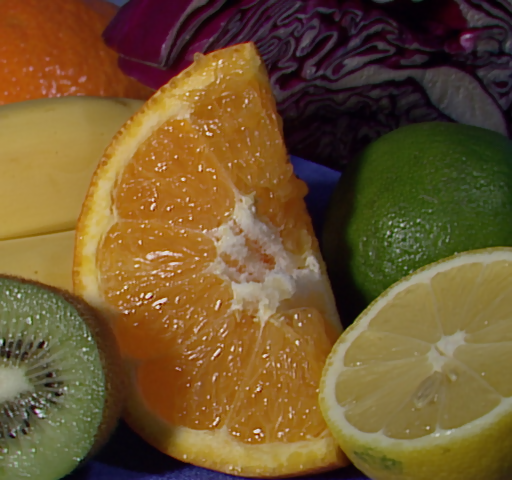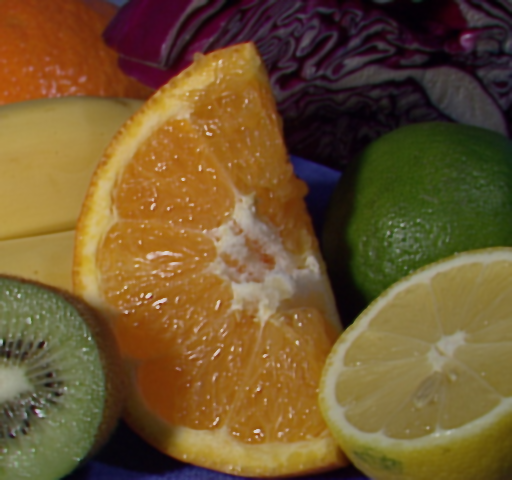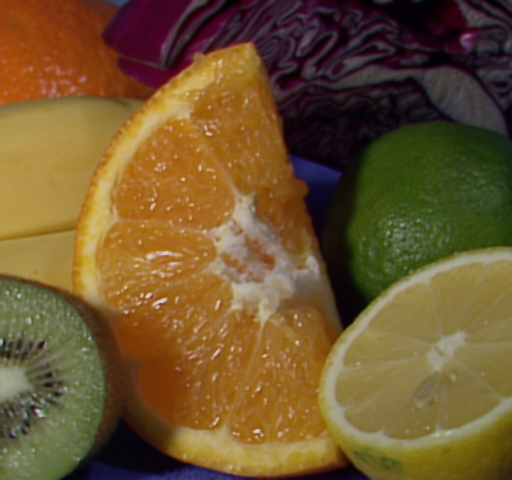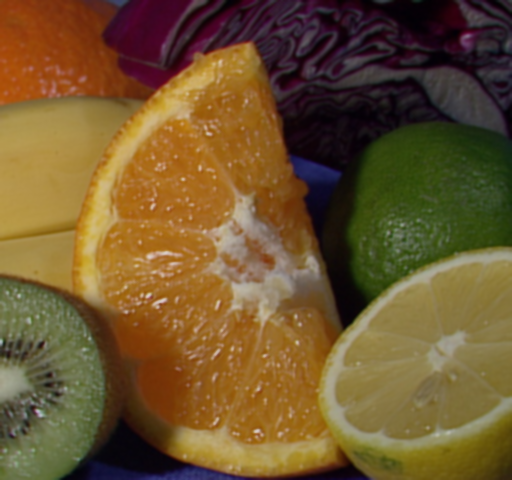双边滤波CUDA优化——BilateralFilter CUDA
转自:http://sangni007.blog.163.com/blog/static/174728148201481305957863/
=======双边滤波概述=======
双边滤波(Bilateral filter)是一种可以保边去噪的滤波器。之所以可以达到此去噪效果,是因为滤波器是由两个函数构成。一个函数是由几何空间距离决定滤波器系数。另一个由像素差值决定滤波器系数。可以与其相比较的两个filter:高斯低通滤波器(http://en.wikipedia.org/wiki/Gaussian_filter)和α-截尾均值滤波器(去掉百分率为α的最小值和最大之后剩下像素的均值作为滤波器)。


OpenCV 双边滤波调用
/****************************************************************************************\
Bilateral Filtering
\****************************************************************************************/
namespace cv
{
static void
bilateralFilter_8u( const Mat& src, Mat& dst, int d,
double sigma_color, double sigma_space,
int borderType )
{
int cn = src.channels();
int i, j, k, maxk, radius;
Size size = src.size();
CV_Assert( (src.type() == CV_8UC1 || src.type() == CV_8UC3) &&
src.type() == dst.type() && src.size() == dst.size() &&
src.data != dst.da ta );
if( sigma_color <= 0 )
sigma_color = 1;
if( sigma_space <= 0 )
sigma_space = 1;
double gauss_color_coeff = -0.5/(sigma_color*sigma_color);
double gauss_space_coeff = -0.5/(sigma_space*sigma_space);
if( d <= 0 )
radius = cvRound(sigma_space*1.5);
else
radius = d/2;
radius = MAX(radius, 1);
d = radius*2 + 1;
Mat temp;
copyMakeBorder( src, temp, radius, radius, radius, radius, borderType );
vector<float> _color_weight(cn*256);
vector<float> _space_weight(d*d);
vector<int> _space_ofs(d*d);
float* color_weight = &_color_weight[0];
float* space_weight = &_space_weight[0];
int* space_ofs = &_space_ofs[0];
// initialize color-related bilateral filter coefficients
for( i = 0; i < 256*cn; i++ )
color_weight[i] = (float)std::exp(i*i*gauss_color_coeff);
// initialize space-related bilateral filter coefficients
for( i = -radius, maxk = 0; i <= radius; i++ )
for( j = -radius; j <= radius; j++ )
{
double r = std::sqrt((double)i*i + (double)j*j);
if( r > radius )
continue;
space_weight[maxk] = (float)std::exp(r*r*gauss_space_coeff);
space_ofs[maxk++] = (int)(i*temp.step + j*cn);
}
for( i = 0; i < size.height; i++ )
{
const uchar* sptr = temp.data + (i+radius)*temp.step + radius*cn;
uchar* dptr = dst.data + i*dst.step;
if( cn == 1 )
{
for( j = 0; j < size.width; j++ )
{
float sum = 0, wsum = 0;
int val0 = sptr[j];
for( k = 0; k < maxk; k++ )
{
int val = sptr[j + space_ofs[k]];
float w = space_weight[k]*color_weight[std::abs(val - val0)];
sum += val*w;
wsum += w;
}
// overflow is not possible here => there is no need to use CV_CAST_8U
dptr[j] = (uchar)cvRound(sum/wsum);
}
}
else
{
assert( cn == 3 );
for( j = 0; j < size.width*3; j += 3 )
{
float sum_b = 0, sum_g = 0, sum_r = 0, wsum = 0;
int b0 = sptr[j], g0 = sptr[j+1], r0 = sptr[j+2];
for( k = 0; k < maxk; k++ )
{
const uchar* sptr_k = sptr + j + space_ofs[k];
int b = sptr_k[0], g = sptr_k[1], r = sptr_k[2];
float w = space_weight[k]*color_weight[std::abs(b - b0) +
std::abs(g - g0) + std::abs(r - r0)];
sum_b += b*w; sum_g += g*w; sum_r += r*w;
wsum += w;
}
wsum = 1.f/wsum;
b0 = cvRound(sum_b*wsum);
g0 = cvRound(sum_g*wsum);
r0 = cvRound(sum_r*wsum);
dptr[j] = (uchar)b0; dptr[j+1] = (uchar)g0; dptr[j+2] = (uchar)r0;
}
}
}
}
bilateralFilter(InputArray src, OutputArray dst, int d, double sigmaColor, double sigmaSpace, int borderType=BORDER_DEFAULT );
- 复制数据 Copy Da
ta to Device - 在Device上开辟2维数据空间作为输入数据:
- UINT *dImage = NULL; //original image
- size_t pitch;
- checkCudaErrors( cudaMallocPitch(&dImage, &pitch, sizeof(UINT)*width, height) );
- 复制数据到显卡 Copy Da
ta from Host to Device: - checkCudaErrors( cudaMemcpy2D(dImage, pitch, hImage, sizeof(UINT)*width, sizeof(UINT)*width, height, cudaMemcpyHostToDevice));
- 在Device上开辟2维数据空间保存输出数据:
- unsigned int *dResult;
- size_t pitch;
- checkCudaErrors( cudaMallocPitch((void **)&dResult, &pitch, width*sizeof(UINT), height) );
- 在Device上开辟2维数据空间作为输入数据:
- 使用纹理储存器
- 声明CUDA数组前,以结构体channelDesc描述CUDA数组中组件的数量和数据类型
- cudaChannelFormatDesc desc = cudaCreateChannelDesc<uchar4>();
- 声明纹理参照系:texture<Type,Dim,ReadMode> texRef;
- texture<uchar4, 2, cudaReadModeElementType> rgbaTex; //以全局变量形式出现
- 将纹理参照系绑定到一个CUDA数组
- checkCudaErrors( cudaBindTexture2D(0, rgbaTex, dImage, desc, width, height, pitch));
- 纹理拾取 // 书P65
- tex1Dfetch()
- tex1D(); tex2D(); tex3D();
- 声明CUDA数组前,以结构体channelDesc描述CUDA数组中组件的数量和数据类型
- 使用常量储存器
- 位于显存,但拥有缓存加速。空间较小(64K),保存频繁访问的只读数据,
- 两种使用方法
- 直接赋值:__constant__ float c_cuda[4] = {0,1,2,3}; __constant__ float c_num = 1;
- 使用函数:__constant__ float color_weight[4*256]; checkCudaErrors(cudaMemcpyToSymbol(color_weight, color_gaussian, sizeof(float)*(4*256)));
- 本程序
- __constant__ float color_weight[4*256];
- __constant__ float space_weight[1024];
- 函数声明局部变量数组 float color_gaussian[4*256]; float space_gaussian[1024]; 使用定义域核和值域核赋值
- 函数赋值:
- checkCudaErrors(cudaMemcpyToSymbol(color_weight, color_gaussian, sizeof(float)*(4*256)));
- checkCudaErrors(cudaMemcpyToSymbol(space_weight, space_gaussian, sizeof(float)*(1024)));
- CUDA处理Kernel
- 并行设计:
- dim3 blockSize(16, 16);
- dim3 gridSize((width + 16 - 1) / 16, (height + 16 - 1) / 16);
- d_bilateral_filter<<< gridSize, blockSize>>>(dDest, width, height, radius);
- 纹理拾取
- center = tex2D(rgbaTex, x, y);
- 计算定义域和值域核的值
- 并行设计:
- 复制数据Copy Da
ta to Host - checkCudaErrors( cudaMemcpy(hImage,dResult,(width * height)*sizeof(UINT),cudaMemcpyDeviceToHost));
#include <helper_math.h>
#include <helper_functions.h>
#include <helper_cuda.h> // CUDA device initialization helper functions
#include "cuda.h"
#include "cuda_runtime_api.h"
#include "device_launch_parameters.h"
#include "device_functions.h"
__constant__ float color_weight[4*256];
__constant__ float space_weight[1024];
UINT *dImage = NULL; //original image
UINT *dTemp = NULL; //temp array for iterations
size_t pitch;
texture<uchar4, 2, cudaReadModeElementType> rgbaTex;//声明纹理参照系
__device__ float colorLenGaussian(uchar4 a, uchar4 b)
{
//若想达到漫画效果,就注释掉sqrt,使颜色距离变大
uint mod = (uint)sqrt(((float)b.x - (float)a.x) * ((float)b.x - (float)a.x) +
((float)b.y - (float)a.y) * ((float)b.y - (float)a.y) +
((float)b.z - (float)a.z) * ((float)b.z - (float)a.z) +
((float)b.w - (float)a.w) * ((float)b.w - (float)a.w));
return color_weight[mod];
}
__device__ uint rgbaFloatToInt(float4 rgba)
{
rgba.x = __saturatef(fabs(rgba.x)); // clamp to [0.0, 1.0]
rgba.y = __saturatef(fabs(rgba.y));
rgba.z = __saturatef(fabs(rgba.z));
rgba.w = __saturatef(fabs(rgba.w));
return (uint(rgba.w * 255.0f) << 24) | (uint(rgba.z * 255.0f) << 16) | (uint(rgba.y * 255.0f) << 8) | uint(rgba.x * 255.0f);
}
__device__ float4 rgbaIntToFloat(uint c)
{
float4 rgba;
rgba.x = (c & 0xff) * 0.003921568627f; // /255.0f;
rgba.y = ((c>>8) & 0xff) * 0.003921568627f; // /255.0f;
rgba.z = ((c>>16) & 0xff) * 0.003921568627f; // /255.0f;
rgba.w = ((c>>24) & 0xff) * 0.003921568627f; // /255.0f;
return rgba;
}
//column pass using coalesced global memory reads
__global__ void
d_bilateral_filter(uint *od, int w, int h, int r)
{
int x = blockIdx.x*blockDim.x + threadIdx.x;
int y = blockIdx.y*blockDim.y + threadIdx.y;
if (x >= w || y >= h)
{
return;
}
float sum = 0.0f;
float factor = 0.0f;;
uchar4 t = {0, 0, 0, 0};
float tw = 0.f,tx = 0.f, ty = 0.f, tz = 0.f;
uchar4 center = tex2D(rgbaTex, x, y);
//t = center;
int posIndex = 0;
for (int i = -r; i <= r; i++)
{
for (int j = -r; j <= r; j++)
{
uchar4 curPix = {0, 0, 0, 0};
UINT d = (UINT) sqrt((double)i*i + (double)j*j);
if(d>r)
continue;
if(x + j<0||y + i<0||x + j>w-1||y + i>h-1)
{
factor = 0;
}
else
{
curPix = tex2D(rgbaTex, x + j, y + i);
factor =space_weight[d] * //domain factor
colorLenGaussian(curPix, center); //range factor
}
tw += factor * (float)curPix.w;
tx += factor * (float)curPix.x;
ty += factor * (float)curPix.y;
tz += factor * (float)curPix.z;
sum += factor;
}
}
t.w = (UCHAR)(tw/sum);
t.x = (UCHAR)(tx/sum);
t.y = (UCHAR)(ty/sum);
t.z = (UCHAR)(tz/sum);
od[y * w + x] = (((UINT)t.w)<<24|((UINT)t.z)<<16|((UINT)t.y)<<8|((UINT)t.x));
}
extern "C"
void updateGaussian(float sigma_color,float sigma_space, int radius)
{
if( sigma_color <= 0 )
sigma_color = 1;
if( sigma_space <= 0 )
sigma_space = 1;
double gauss_color_coeff = -0.5/(sigma_color*sigma_color);
double gauss_space_coeff = -0.5/(sigma_space*sigma_space);
float color_gaussian[4*256];
float space_gaussian[1024];
for(int i=0;i<256*4;i++)
{
color_gaussian[i] = (float)std::exp(i*i*gauss_color_coeff);
space_gaussian[i] = (float)std::exp(i*i*gauss_space_coeff);
//if(i>100) color_gaussian[i] = 0.0f; //漫画效果
}
// for(int i = -radius,int maxk=0;i<radius;i++)
// for(int j=-radius;j<radius;j++)
// {
// double r = sqrt((double)i*i + (double)j*j);
// if( r > radius )
// continue;
// space_gaussian[maxk++] = (float)std::exp(r*r*gauss_space_coeff);
// //space_ofs[maxk++] = (int)(i*temp.step + j*4);
// }
checkCudaErrors(cudaMemcpyToSymbol(color_weight, color_gaussian, sizeof(float)*(4*256)));
checkCudaErrors(cudaMemcpyToSymbol(space_weight, space_gaussian, sizeof(float)*(1024)));
}
extern "C"
void initTexture(int width, int height, uint *hImage)
{
// copy image data to array
checkCudaErrors(cudaMallocPitch(&dImage, &pitch, sizeof(UINT)*width, height));
checkCudaErrors(cudaMallocPitch(&dTemp, &pitch, sizeof(UINT)*width, height));
checkCudaErrors(cudaMemcpy2D(dImage, pitch, hImage, sizeof(UINT)*width,
sizeof(UINT)*width, height, cudaMemcpyHostToDevice));
}
extern "C"
void freeTextures()
{
checkCudaErrors(cudaFree(dImage));
checkCudaErrors(cudaFree(dTemp));
}
// RGBA version
extern "C"
double bilateralFilterRGBA(uint *dDest,
int width, int height,
int radius, int iterations,
StopWatchInterface *timer)
{
// var for kernel computation timing
double dKernelTime;
// Bind the array to the texture
cudaChannelFormatDesc desc = cudaCreateChannelDesc<uchar4>();
checkCudaErrors(cudaBindTexture2D(0, rgbaTex, dImage, desc, width, height, pitch));
for (int i=0; i<iterations; i++)
{
// sync host and start kernel computation timer
dKernelTime = 0.0;
checkCudaErrors(cudaDeviceSynchronize());
sdkResetTimer(&timer);
dim3 blockSize(16, 16);
dim3 gridSize((width + 16 - 1) / 16, (height + 16 - 1) / 16);
d_bilateral_filter<<< gridSize, blockSize>>>(dDest, width, height, radius);
// sync host and stop computation timer
checkCudaErrors(cudaDeviceSynchronize());
dKernelTime += sdkGetTimerValue(&timer);
}
return ((dKernelTime/1000.)/(double)iterations);
}
- pace_sigma 和 color_sigma正向影响平滑力度,取值越大,平滑越明显。
- pace_sigma = 10 ;color_sigma=10;

- pace_sigma = 150 ;color_sigma=150;

- 漫画效果
- 在进行双边滤波时,发现有时会出现类似漫画的效果,物体的边缘有黑边

这是由于当颜色差距过大时,值域核为0,颜色和空间高斯值差距过大时,定义域核和值域核为0(定义域核一般不会为0)
- 计算高斯核数组时,void updateGaussian( ) 加入:if(i>100) color_gaussian[i] = 0.0f; //漫画效果
- 计算颜色距离时,colorLenGaussian(uchar4 a, uchar4 b),去掉sqrt









